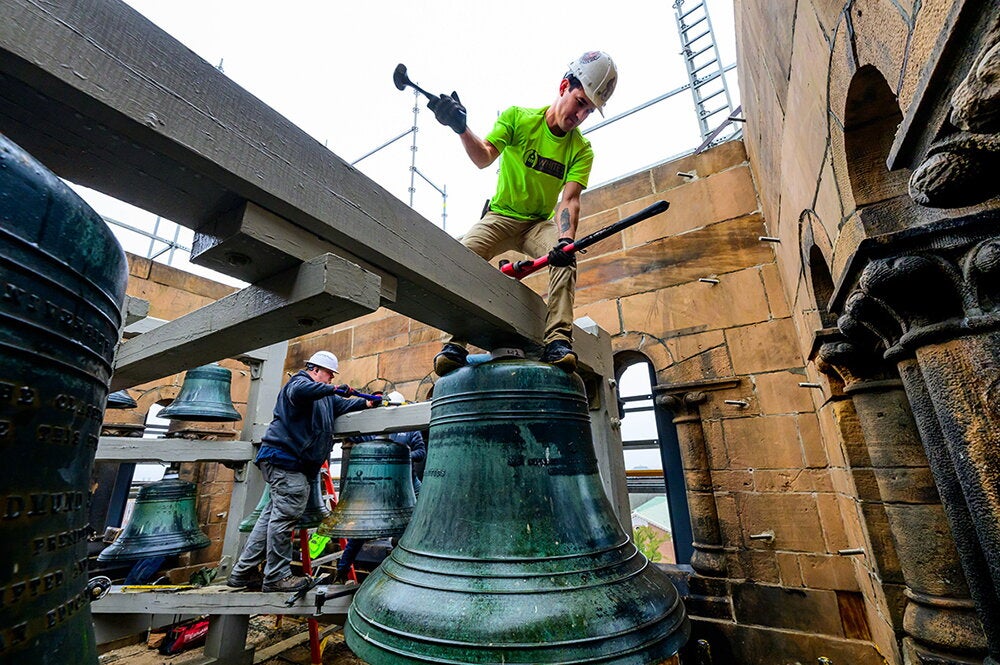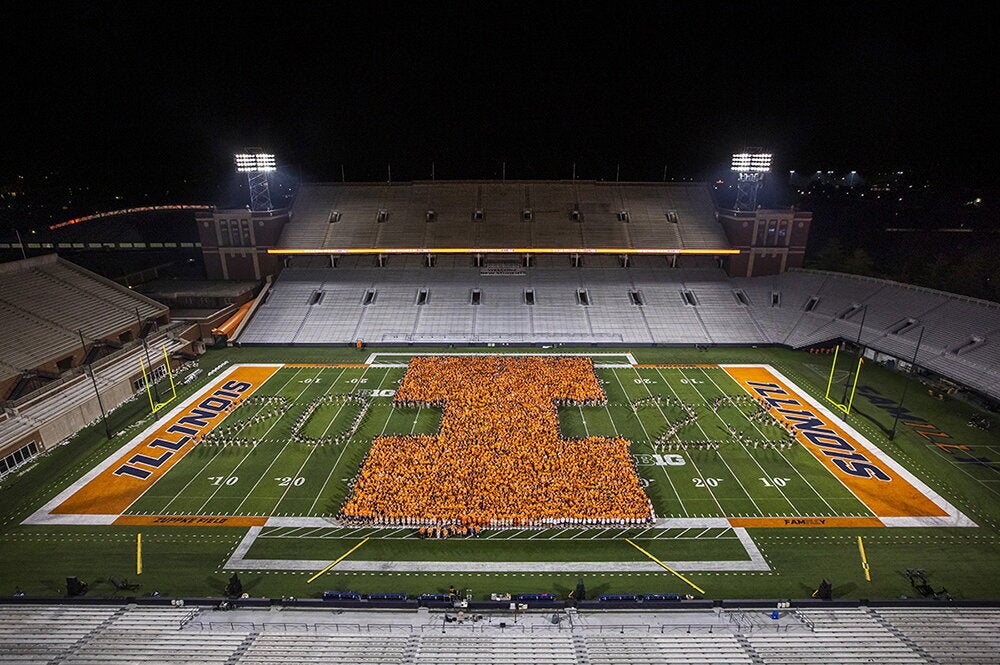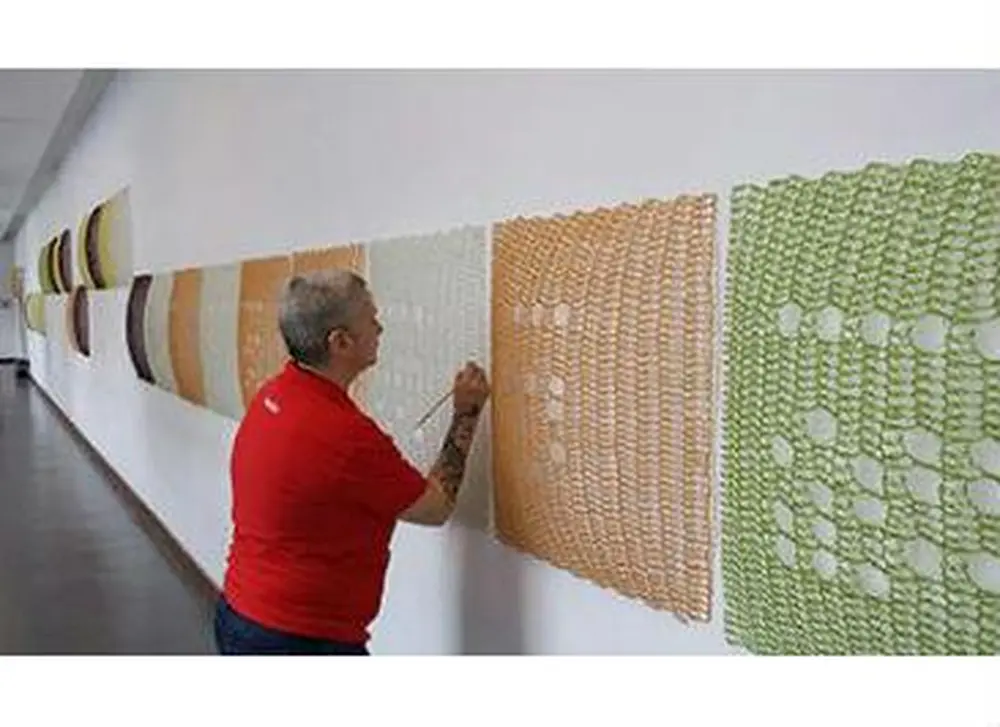
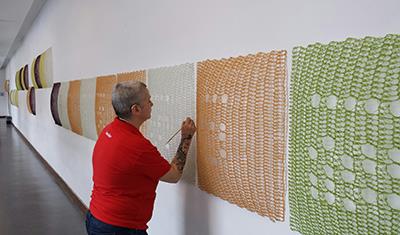
Long after the new walls have gone up, classrooms have been upgraded, and Lincoln Hall looks like new again, the renovation is receiving its last strokes of the brush. New art from Illinois artists has been installed in key areas of the revived building.
Recently, in the Dean’s Suite on the second floor, Holly Wolf-Mattick (MFA ’02), of Woodstock, Ill., set up “Circular Reflections: Geometry and Light,” her work of glass panels and rings created specifically for Lincoln Hall.
At the same time, Yvette Kaiser Smith, of Chicago, set up her display of crocheted fiberglass with polyester resin panels along a 128-foot corridor on the west side of Lincoln Hall’s second floor. Called “Lifesaver Movement in e,” in reference to Euler’s number, it was also designed and created for the building.
Wolf-Mattick and Kaiser Smith were commissioned through the Illinois Capital Development Board’s Art-in-Architecture Program, created in 1977 by the Illinois General Assembly to guarantee the installment of art displays in public buildings that were either constructed or subjected to major renovation with state funds, as was Lincoln Hall.
“By statute, one-tenth of one percent of the construction budget is set aside for art,” says Linda Norbut Suits, chair of the Art-in-Architecture Program for the Capital Development Board.
Paintings in the offices of the Department of Communication (located in Lincoln Hall) were installed through the program. In the future, art will also be installed in the LAS Office of Student Academic Affairs and the Department of Sociology (also located in Lincoln Hall).
Art on display in front of the new Electrical and Computer Engineering Building was also added through the program, Norbut Suits says.
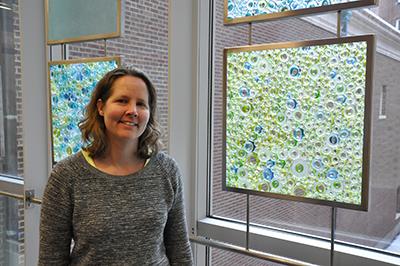
Wolf-Mattick says it took her about three and a half months to create her display, which was installed in the waiting room of the Dean’s Suite. Hanging glass panels and rings capture the light coming in from huge windows overlooking one of the Lincoln Hall courtyards. Some panels hang next to the windows, while others on a wall facing the windows bear a shadow print from sifted glass powder.
“Many of the panels are made out of blown glass tubing that is cut, and then fused together in patterns,” she says. “It’s the same color palette (throughout the panels), but different details are going on. And on the perpendicular walls we have hanging rings, and those play off the circular patterns on the panels, but they are enlarged, so it plays with size and still plays with the lighting.”
Kaiser Smith’s multi-colored display consists of a row of 30 panels, each a convex square of crocheted fiberglass dipped in resin, with 55-inch sides. Being as the display is in the same corridor as Applied Technologies for Learning in the Arts and Sciences, she wanted the display to be based on numbers and technology (and the “lifesaving” aspects of computer support and solutions, she notes).
The panels are designed to each display one of the first 30 digits of Euler’s number, or e, in binary code, which is the number system to convey instructions to a computer. For more on how she did this, you can see a description on her website.
She wanted to work with an infinite number because of the way the corridor, overlooking Wright Street through a long series of windows, seems to stretch forever.
“I spent a couple hours in here before I started thinking of projects, and I was just swept into that long, endless corridor,” Kaiser Smith says. “It was a beautiful day, with all these shadows, so you had a long continuous line of patterns, and I really wanted to work that. That’s why I wanted to do this continuous line.”
